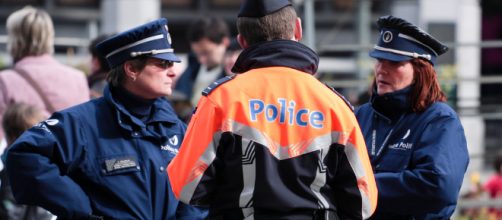The tiny Western European country of Belgium has once again been struck by a radical Islamic terrorist. This time, authorities say that 36-year-old Benjamin Herman shot and killed two female police officers and a male bystander in the city of Liege. The Tuesday attack only ended when Herman, an ex-con with previous convictions for drug dealing and other petty crimes, was shot and killed by police officers in a nearby school.
Sadly, Herman was released on prison day leave on Monday, just one day before his massacre. Even more tragic is the fact that one Belgian lawmaker told the Francophone television station RTBF that Herman had been listed on a radicalization watch list for some time, owing to his conversion to extremist Islam while serving time in prison.
Herman's attack occurred some time around 10:35 AM on a city street in Liege. The two police officers killed have been identified as 45 years old and 53 years old. At first, Herman slashed and stabbed the two officers with a box cutter, then removed their service pistols and shot them both. Herman's third victim was a 22-year-old teacher-in-training who was shot dead while sitting in his car. This victim was killed only one hundred meters away from his school.
End of the line
After killing his final victim, Herman barged his way into the school and took two female employees hostage. In response, armed police stormed the high school and engaged in a firefight with the terrorist. Several officers were wounded in the gun battle before Herman was finally killed.
Reflecting on the day's events, politician George Dallemagne, a member of several security councils run by the Belgian Parliament, called his government's anti-terrorism procedures "tragically flawed." Dallemagne and other Belgian politicians on the scene have claimed that Herman's attack was most likely aimed at the police.
Belgium's national crisis center has been on high alert since the 2016 terror attack at the Brussels Airport in Zaventem. In that attack, five terrorists, Ibrahim El Bakraoui, Najim Laachraoui, Mohamed Abrini, Khalid El Bakraoui, and Osama Krayem, detonated explosives at the international airport and the Maalbeek Metro Station. These coordinated attacks killed 32 people and wounded over three hundred.
Belgian prosecutors say that these five men were inspired by ISIS.
Just last June, another terrorist, Oussama Zariouh, detonated a bomb at Brussels Central Station. Fortunately, only the attacker was killed in this incident.
What is to be done?
While the Belgian royal family and Interior Minister Jan Jambon have taken to Twitter in order to express their condolences and to offer up assurances that the Belgian police are working the case, many Belgian citizens still have to face the fact that their small nation has become a hotbed of Islamic terrorism. Belgian-born French citizen Salah Abdeslam, once of the chief architects of the November 2015 terror attacks in Paris that killed over 100 people, was captured in Brussels after a violent shootout with police in March 2016.
Tellingly, Abdeslam took shelter in the Brussels neighborhood of Molenbeek, which is known internationally as one of the main recruiting centers for European-based jihadists. Until this neighborhood is purged of its criminal and terrorist elements, and until Belgian prisons are cleared of radical preachers, the citizens of Belgium may never truly know peace in their own land.


